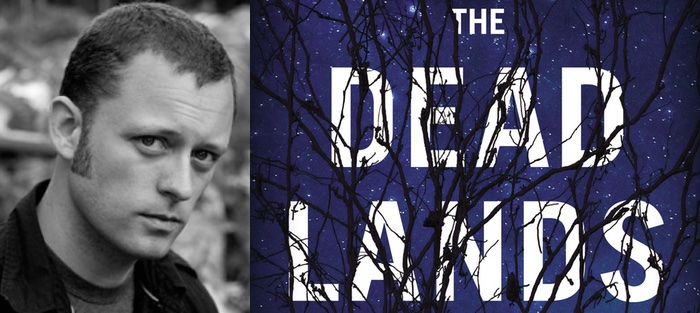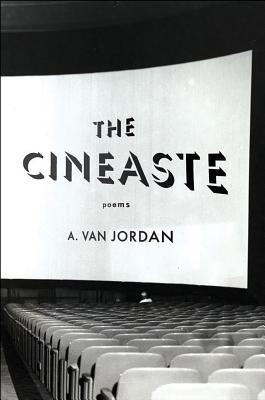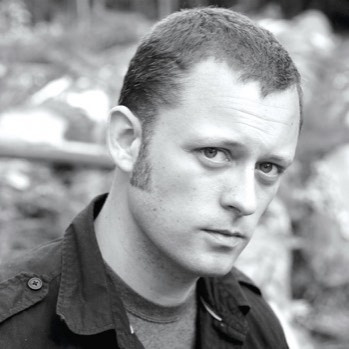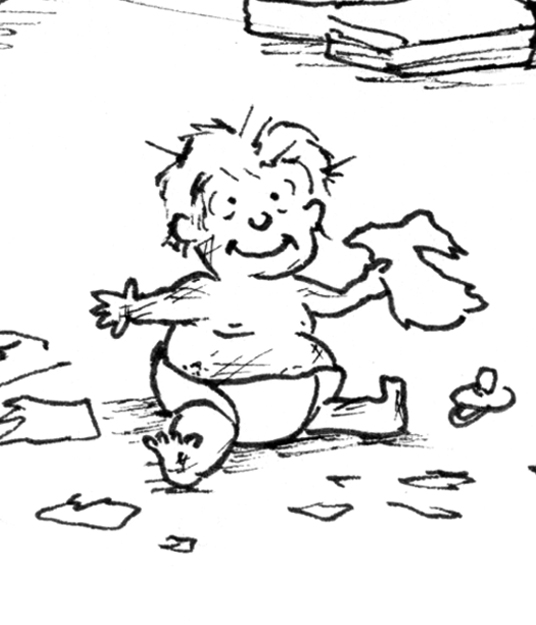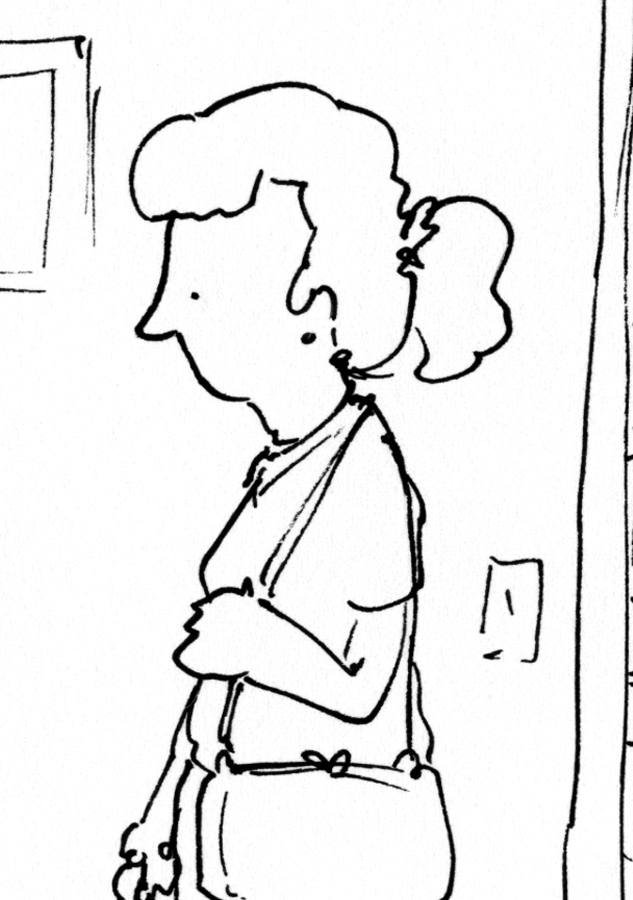A few years ago, as I slowly prepared to enter the fray of MFA program applications and literary magazine submissions, I spent a great deal of time exploring contemporary short stories. I read old stalwarts like Raymond Carver, Tobias Wolff, and Alice Munro, and great newer writers like Jodi Angel, Karen Russell, and others. But throughout my search, another name kept popping up: Benjamin Percy.
Percy is a key member of the latest generation of writers who have been vaulting back and forth over the wall separating literature and genre fiction, writers who want their work to be challenging–both intellectually and emotionally–as well as entertaining, riveting reading. He’s in the good company of highly respected literary authors like Michael Chabon, David Mitchell, and Jennifer Egan. To read their work is to see the wall separating literary and genre fiction cracking and vulnerable. And Benjamin Percy is coming at it with a sledgehammer, ready to knock it down once and for all.
His third novel, The Dead Lands (Grand Central), a post-apocalyptic re-telling of the Lewis and Clark saga, was released earlier this year and will come out in paperback in February, and he recently took over writing the Green Arrow storyline for DC comics. The title story of his second story collection, Refresh, Refresh (Graywolf Press, 2007), was just published in 100 Years of the Best American Short Stories (Houghton Mifflin Harcourt) in October. And next fall he’ll publish Thrill Me, a craft book about the art of suspense and momentum in fiction, with Graywolf Press.
We sat down recently at Sierra Nevada College, where Percy was a visiting instructor in the low-residency MFA program, and talked about his latest novel, the teamwork involved in writing comics, and how parenting and having a daughter has shaped the course of his work.
Interview:
Brandon Dudley: Why was The Dead Lands the story you had to tell? What was it that drew you to the idea and stuck you there?
Ben Percy: I grew up in Oregon, and my mother is a hobby historian who was obsessed with the Lewis and Clark expedition. Over and over again, when I was a kid, we’d visit Fort Clatsop or we’d stop at historical markers, and she’d lecture us about the Corps of Discovery and refer to the expedition as the greatest adventure story in American history. I attended the bicentennial; I read their journals; I read Stephen Ambrose’s Undaunted Courage. There was a well of information inside me, and I wanted to channel it onto the page.
I originally deliberated a nonfiction project. I would recreate the passage myself, canoeing it, biking it, hiking it, bringing friends and family with me along the way. It would not only track the adventure, but also recount my upbringing, which was rather wild and unsupervised, Huck Finn-ish.
A publisher bid on the idea—alongside my novel Red Moon—but after talking it over with my wife, we decided it would be too intrusive, taking me away from home for several months and requiring me to take a leave of absence from the teaching position I held back then. So I decided to make some stuff up instead.
Rather than writing a historical novel, which has been done and done well, I decided to innovate the story by making the expedition post-apocalyptic, “Lewis and Clark 2.0.”And that approach made the story fresh and perilous once more. This isn’t something that’s happened—it’s something that’s happening—which gives the reader the true sense that the nation hangs in the balance, its future dependent on the success or failure of the journey.
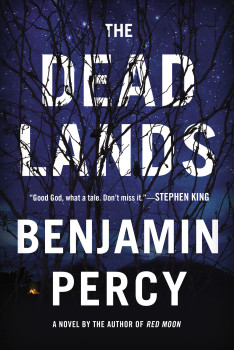 What were some of the storytelling challenges you faced writing the novel?
What were some of the storytelling challenges you faced writing the novel?
Content, for starters. In writing a revisionary future, I had to decide what to lose, what to keep, in order to stay to true to the spirit of their journals without feeling chained to the past.
And then I debated the structure. I love Lonesome Dove, by Larry McMurtry. I love The Hobbit and The Lord of the Rings, by Tolkien. I love The Road, by McCarthy. But quest narratives are problematic for their episodic nature. Consider The Adventures of Huckleberry Finn: Huck and Jim get on the raft, they go down the river, they get off the raft, hijinks ensue; they get back on the raft, go down the river, get off the raft, hijinks ensue. Conrad’s Heart of Darkness works similarly. There’s no causal thrust. To make my story surge forward, I knew I had to do more than simply get them from point A to point Z. I’ve done a number of things to combat this. They’re being pursued—that’s one. There’s a continuing storyline in St. Louis that I flash back and forth between—that’s another.
Was there anything from the actual journey that you wanted to use but you just couldn’t get it to fit in? Was there anything that you lost that you were disappointed you couldn’t get to work?
I debated whether to work in Seaman, a Newfoundland that traveled with the Corps of Discovery—but I already had a mechanical owl as a kind of mascot, so I gave up on the dog. Every once in a while I’ll wonder about how that would have changed the novel.
Abbreviation was key. I didn’t want to write a 900-pager, which would have been very easy to do, given how much material I had to work with. So, how do you write a story about a journey of several thousand miles that reads propulsively? You’ve got to cut out the transitions. You have to somehow make the reader feel beaten-down and overwhelmed by the passage of time, by the great distance the characters have traveled, but you cannot take them through every day or mile.
I ended up leaping over many of the transitions and then supplying nuggets of backstory. So we might jump from some juncture—say, Omaha—to another several hundred miles away—say, Bismark—and then get an abbreviated version of what happened in between.
Generally you like to avoid backstory, right? When do you find it necessary to include it? Or is it ever necessary?
I’m always debating this. Generally speaking, backstory destroys forward momentum. But there are justifications for its use. You can use it to enhance momentum. Let’s say you cut away in the middle of something. A moment of physical or emotional peril. The audience is left hanging. You follow some other side plot for a time. While the reader gets caught up in this new bit of mayhem, they’re still wondering what happening with the other bit of mayhem. When you finally return to the previous plotline, maybe you still don’t supply the answer. You hold off on it a bit. And then sandwich it into a scene. This gives it a double-whammy effect, where it’s propelling the reader forward with curiosity and informing the dramatic present.
You have a hybrid style, pulling from both literary and genre, which you’ve described before as “beautiful sentences about blowing up helicopters.” How do you find a balance between those two sides? How do you know when to slow the narrative down for those beautiful sentences and how do you know when it’s time to just blow the hell out of the helicopters?
The process begins with a scroll that I hang up on my office wall. And on the left side of the scroll I scratch out Wikipedia entries about my characters, figuring out who they are, figuring out what they desire. Once I figure out what they desire I set obstacles in the way of that desire. These are the first stirrings of plot and they reach across this scroll like many tendrils or threads.
I typically write stories with multiple points of view, so if you imagine this scroll, here’s Character A, here’s Character B, here’s Character C, and you have all these plotlines reach across a five-foot stretch of paper.
I then step back from the scroll and figure out where the high points and the low points are, where set pieces are, the crescendos, the moments of high-stakes, high-octane action. And then I’m also figuring out their counterweight. The low points. The moments of emotional repose. I mark these respectively with upticks and downticks so that the scroll sort of looks like sheet music.
I’m aiming for balance. You don’t want to have uptick, uptick, uptick, just as you don’t want to have a series of downticks. You can’t have one scene in which characters are discussing stuff, followed by another scene in which characters are discussing stuff, followed by a scene in which some character is really sad about some stuff, followed by a scene in which a character is planning to do some stuff.
Instead a peak followed by a valley. So let’s say I write a bank robbery scene. There’s a peak. Lots of action. Lots of exploding helicopters, so to speak. This will be followed by a valley. Maybe the character has been shot, so he’s dealing with that. And maybe the wad of cash is stained by a security device that bled ink all over it. And maybe one of this guy’s buddies got captured by the cops, so he’ll worry over getting ratted out.
I’ll have plenty of pretty sentences during the bank robbery, but they’ll likely be stripped down, because I want the drama to speak for itself. I don’t want the style to get in the way. Here, though—when the guy is bleeding out and holding a ruined bunch of bills and worrying over his partner—I’ll probably go deep into a consciousness and amplify the prose as well.
You’ve talked before about how Stephen King’s The Gunslinger was something that you came to when you were younger and was a transformative reading experience. Are there any contemporary novelists you think might be able of having that impact? You have kids yourself, what books do you think maybe in a few years they might read and have a similar experience?
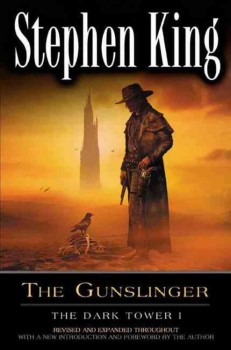 My wife and I read to the kids every night. And we’re making a concerted effort to expose them to literature and to expose them to film that we hope will open them up their worldview, that will bring them joy but will also make them uncomfortable, that will educate them, change who they are.
My wife and I read to the kids every night. And we’re making a concerted effort to expose them to literature and to expose them to film that we hope will open them up their worldview, that will bring them joy but will also make them uncomfortable, that will educate them, change who they are.
We spend a lot of time—after closing the book for the night or after ejecting a disc from the DVD player—talking about the story. Maybe from Harry Potter, they comprehend what it means to be bullied for being different. Maybe from The Hobbit they understand what it means to find courage and break out of your comfort zone. Maybe from Alice’s Adventures in Wonderland, they come to learn how to use their imagination for escape.
Why do you think it’s important for them to have those uncomfortable moments?
They live in a very privileged community, an amazingly safe place. You could leave your wallet on a sidewalk in Northfield, Minnesota, and come back seven years later and it would be waiting for you. The schools are fantastic. They’re surrounded by all these supportive, encouraging people, and that’s not life, that’s not the world. So we try to expose them as much as we can—through travel and through film and through literature—so that they might grow more empathetic.
A great deal of your work deals with what you’ve described before as “the burden of manhood.” Why does that appeal to you and why do you describe it as a burden?
Early on, when getting interviews, I was putting on a show and trying to intellectually justify what I wasn’t actually considering when at the keyboard. I remember someone asking me about “the new masculinity” that I was chronicling. In my head, I thought, “What in the hell is new masculinity? And how is it any different than the old masculinity?” Instead I went along with it, trying to sound smarter than I am.
Here’s a straighter answer. When you’re first starting out, you’re churning out ore, you’re churning out what’s inside you. I grew up in a masculine environment. I ended up putting some of that on the page. Not because I was making any sort of statement. But because I was chronicling what I knew.
I’ve since broken away from that. I wouldn’t call my work over the past five years masculine at all. The opposite might be true. I’m trying to populate my stories with as many strong female characters as I can. In part this is because I have a daughter. I’ll take her to the movies or I’ll take her to the comic store, and she’ll complain, Why aren’t there more stories about “girl heroes”? How can I not respond directly to that?
Is that why, in your first story arc in Green Arrow, it’s actually the young female character, Emi, and not Green Arrow, who saves the day?
That’s exactly right. I made that inversion intentionally. Every time I write Emiko, I’m thinking of my daughter.
Speaking of the comics, you’re bouncing between a lot of different mediums—you’re writing for Esquire, short stories, novels, comic books, a TV show. Does it ever feel that by focusing on so many different projects you’re draining your creative energy, or does each project add fuel to the fire?
I do sometimes feel overwhelmed, spread thin, but in general I find having a lot of irons in the fire works for me. Whenever I get tired of a project, and I inevitably get tired of novels and screenplays, I break away and crush out a short story, an article, an essay, a comic script, and I return to the longer work refreshed and with a better perspective.
I have too many ideas—five a day, ten a day, all demanding to be written—and the ability to work in many mediums helps me churn them out.
I love writing comics, especially while working on a novel. The satisfaction of their quick completion and release. By contrast, writing novels is marathonic and lonely and a bit depressing.
Usually in your writing you can create from whole cloth, you can do whatever you want, but with the comics there’s already an established backstory. Is working with that established character limiting, or does it free you to focus on plot because you don’t have to create the character and their backstory?
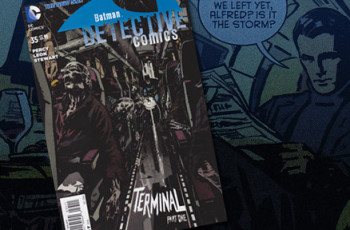 It’s exciting to take on a character like Batman. It’s exciting to take on a character like Green Arrow. But you’re limited in what you can do. There’s continuity to account for, and there are audience expectations. I like drawing from a well. I like being part of this larger mythology, but I would also love to create my own comic book characters, which I’m working on right now, building pitches to send off to publishers.
It’s exciting to take on a character like Batman. It’s exciting to take on a character like Green Arrow. But you’re limited in what you can do. There’s continuity to account for, and there are audience expectations. I like drawing from a well. I like being part of this larger mythology, but I would also love to create my own comic book characters, which I’m working on right now, building pitches to send off to publishers.
In my initial pitch for Green Arrow, I made him half black. I thought because he is a social justice warrior, because he fights oppression, because the hood is the anti-authoritarian symbol of this time, that that would be an interesting take on the character. I wasn’t permitted to do that.
I wasn’t permitted to reinvent his mythology, either. I had a different idea for how he becomes a hero, separate from the shipwreck and his time on the island. And what I discovered is that you can only do so much. And the island for Green Arrow is the equivalent of Crime Alley for Batman. There are certain things you can’t toy with.
There are other limitations beyond content. A comic script usually contains five to seven scenes in 20 pages or 22 pages. Within those limitations there’s endless possibility and sometimes there’s something weirdly inspiring about being jailed in. The poet Terrance Hayes said something I really love. If you can breakdance, cool. But if you can breakdance in a straight-jacket, you’re a badass. He was talking about writing free verse compared to writing sonnets or villanelles, but I’m talking about comics. Writing comics is a little like breakdancing in a straight-jacket.
In the first three issues of Green Arrow, you tackled issues of race and class. Your work often has a political angle: terrorism and xenophobia in your novel Red Moon, the Iraq war in the story “Refresh, Refresh” and the novel The Wilding, the 1% versus the 99% of The Dead Lands. Do you feel as a writer you have a responsibility to comment on current political or social issues? If so, how do you keep the work balanced between the story and the message? How do you keep it from feeling too didactic?
I’m hoping to thrill, to entertain, but also to educate and incite. Some of my favorite stories are those that channel the anxieties of the time. It’s tricky though, being political without being polemical, being morally serious without being moralistic. I don’t want my work to come across as editorial. I don’t want the reader to know my opinion on a hot-button topic. I want to raise questions, not answer them.
What has it been like transitioning from the solitary life of a novelist to working on these team projects like comic books and television shows?
Working in comics is incredibly exciting. Working with an artist and creating as a team. We challenge each other. We make each other better. I’ve never had a more rewarding creative experience. Working in film and TV is also collaborative, but it can be nightmarish.
If you think about the way a [writing] workshop plays out, you have fourteen different voices, all giving you differing, often contradictory opinions. Hollywood is a larger, more carnivalesque version of the workshop. And somehow, impossibly, you have to do what everybody says. You have to account for your manager’s notes, your agent’s notes, the director’s notes, the three different producers’ notes, and later on probably the actor’s notes and maybe the cinematographer’s notes. Oh, and maybe the director’s manager’s notes and the actor’s manager’s notes. It’s phone call after phone call, meeting after meeting, and sometimes, at the seventieth draft, you’re reverting back to the seventeenth draft, putting back in what was taken out.
This is not to say that my stories have not become better because of the feedback that I have received, but they have also become worse. There are too many cooks in the kitchen in LA. I think many projects die by committee. I enjoy collaborating with people, but not a boardroom worth of people.
So do you think you’ll stick with films at all?
 I’m a novelist principally. I like being the writer and the director and cinematographer and costumer and lighting technician and even the caterer as I walk upstairs and make my peanut butter toast and fill another cup of coffee. I’m the guy in charge. I’m frankly not interested in anybody else’s vision beyond my editor’s.
I’m a novelist principally. I like being the writer and the director and cinematographer and costumer and lighting technician and even the caterer as I walk upstairs and make my peanut butter toast and fill another cup of coffee. I’m the guy in charge. I’m frankly not interested in anybody else’s vision beyond my editor’s.
But I will continue to chase movie and TV projects because I’m obsessed with the screen. It might be childish of me, but I can think of nothing more exciting or rewarding than seeing one of my stories on TV or in the theater.
But comics…comics feel like a nice negotiation between the two. I’m making a movie. A movie you can hold in your hand. And I don’t have to worry about the actor’s availability. I don’t have to worry about the special effects budget. Comics are limitless in their possibilities, and they’re fast. If you pitch it and it’s accepted, it will be printed in a few months’ time.
I’ve been lucky enough to work with artists like JP Leon and Patrick Zircher, who are not only incredibly talents, but incredible educators. They’ve helped me out, coached me along, since I’m new to the form. They elevate my stories, co-pilot my stories. I give Patch —Patrick Zircher —an average of five panels per page, and he will compress and expand that according to his vision, and do things that would never have occurred to me that make the story so much more impactful and beautiful.
What were some of the things that you had to learn going into the comics? What were some of the mistakes they helped you work through?
You don’t have a lot of time to tell a story. As a result, your panels need to be doing multiple things at the same time. And every panel has to be uniquely justified. You can’t have somebody drinking milk and worrying over their marriage and job. If you really want them drinking milk and monologuing, they might also need to be firing a gun, kicking some baddie, while also being ripped into the sky by a harness attached to a helicopter.
I first realized this when sketching out my panels, when scripting. I’d have Character A talking to Character B, while sitting someplace. And then my next panel, I’d have Character A talking to Character B, and they were now standing, and then I’d have another panel in which Character A and Character B were waiting at a bus stop. I realized the lack of action through the visuals.
In novels and film, there is horizontal movement, which is the action, and then there’s vertical movement, which is emotional depth. And the scenes in which I thought I was moving the story forward, I was just supplying the vertical. There needs to be a balance between the two, even in comics, but you don’t have a lot of space for it. Especially if you have a superhero comic, your reader is going to be more invested in the horizontal.
The trick is making them believe in the character and care about the character, as opposed to just wowing them with the whiz-bang, with the next uppercut or gutshot or explosion. Sneaking the heart into the story has been the trickiest part so as not to destroy the pacing expected of me.
Recently you wrote an essay for Guernica where you talked about the isolation of being a writer. As writers, we often hear that isolation is necessary for the process, to keep the world from distracting from the work. Do you think there are diminishing returns in that? By pulling yourself out of the world, are you robbing yourself of the experiences that might inform the writing?
Absolutely. It’s one of the reasons I love taking on nonfiction assignments. I’m sent to Japan. I’m sent to The Rockies. I’m put on some strange diet. I’m strapping on a parachute and jumping out of a plane. I’m rafting down a river. I’m interviewing a criminal or a soldier or a taxidermist or a famous author. I’m taken out of my world, my ruts. I’m exposed to something completely different and I always come back to the keyboard with ten fresh ideas in mind. Isolation and routine are essential for me, essential for productivity, but I have to escape every now and then, escape from my cell, otherwise I do think that the well would run dry.
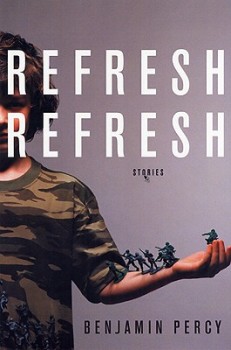 One thing that stood out to me right away in your collection Refresh, Refresh was how your first sentences throw the reader into the action. They propel the reader into a mystery, something they wanted to know by the end of the first sentence.
One thing that stood out to me right away in your collection Refresh, Refresh was how your first sentences throw the reader into the action. They propel the reader into a mystery, something they wanted to know by the end of the first sentence.
And then I looked at your previous collection, The Language of Elk, and it seemed like there was an evolution. The first sentences of those stories seemed to be about creating a mood more than a mystery. I was wondering if you could talk a little bit about that evolution.
When I stepped into my first creative writing class, I was told that I could not write genre. Prior to that, I thought that storytelling consisted of vampires and dragons and robots with lasers for eyes. And I was thereafter exposed to writers like Sherman Alexie and Alice Munro and Tim O’Brien and Flannery O’Connor, writers whom I fell in love with and learned a great deal from.
But—let’s face it—literary fiction has become a genre of its own. In general, it casts its spotlight on style over story. On pretty sentences over action. In my undergrad and grad workshops, I was doing my best to create believable characters. I was doing my best to play around with themes and metaphor and grammatical choices and their rhetorical effects. I was becoming a better writing, but I was neglecting the very thing that made me want to become a writer.
I read this collection called Thrilling Tales when I was about to leave grad school, edited by Michael Chabon. He asked a dozen or so authors to write the type of stories they would have loved growing up. So Sherman Alexie wrote a zombie story and Jim Shepard wrote a story about a giant shark and Rick Moody wrote a story about a dystopian future and Kelly Link wrote a story about witches. I was completely in love with the idea of this—of writing for that reader.
Around that time my wife said I’d taken the fun out of reading. She refused to pick up any book I’d read because of my marginalia. I was diagramming sentences or I was blueprinting scenes, obsessed with mechanics. And yet, neglectful of the engine that made a story move. And that’s why most people read. That’s why I used to read. Because I loved the breeze the pages made on my face when they turned swiftly.
The stories in The Language of Elk came out of grad school. The stories in Refresh, Refresh reflect a transition that was occurring afterward. I was concentrating more on plot. I was thinking more about the kinds of stories I was originally obsessed with, the stories that made me want to become a writer: mysteries by Agatha Christie and Sir Arthur Conan Doyle, sci-fi novels by Dan Simmons and Ray Bradbury and Ursula K. Le Guin, westerns by Zane Grey and Louis L’Amour.
Refresh, Refresh is still very literary, but I think you can see, book by book, a transition. An evolution that continues to this day. I’m hopefully still artful, but concentrating much more on movement, on page-turning suspense.
Some people would say—some people do say—that they’re less interested in my work now that I’ve thrown werewolves or the apocalypse or demons or superheroes into the mix, but hey, I’m having a hell of a lot more fun. I’ve still got a lot to learn, but I’ve lived up to the dream that sent me into that first creative writing workshop.

